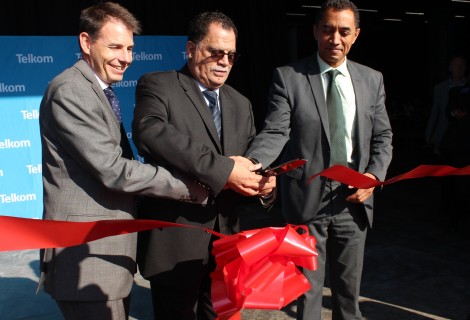Centre for Energy Research seeking alternative renewable energy solutions
The research into finding alternative renewable energy solutions conducted by the Centre for Energy Research (CER) at NMMU was featured in Business in the Metro, supplement of The Herald.
The published article can be read below:
“ANOTHER first for the Eastern Cape,” is the way PiA Solar co-founder Colin Muller describes the Centre for Energy Research (CER) at Nelson Mandela Metropolitan University (NMMU).
Established in 2006, the centre was one of the first academic units in the country to focus on finding sustainable energy alternatives to fossil fuels.
“The CER is clearly a leader in its field because international companies are entrusting it to conduct research on their behalf,” says Muller.
The CER is currently conducting research projects funded by the Department of Science and Technology, the South African Renewable Energy Centre of Research and Development (Record), in partnership with the German International Co-operation Agency (Giz).
Port Elizabeth-based PiA Solar is the first company in Africa to design and install mounting systems for utility-scale solar farms.
According to CER head Prof Ernest van Dyk, the centre combines the strengths of a number of different departments within NMMU.
“It coordinates multidisciplinary research in the fields of science, engineering and economics.”
He says it brings international best practice and the latest research to the Eastern Cape through collaboration with local and international industries, research institutes and universities engaging in energy related research and development activities.
The photovoltaics (PV) research activities of the CER are based in the department of physics. Research capabilities to which industry has access include PV materials and defect studies, device physics, solar cell and PV module characterisation and systems evaluation.
The university has one of only two centres in the country with a complete indoor PV characterisation laboratory and an outdoor facility for evaluating PV devices and systems.
It can evaluate the full range of standard silicon solar cells, thin film solar cells and high efficiency concentrator solar cells.
The CER also has the country’s first outdoor electroluminescence (EL) imaging camera, which is capable of evaluating the condition of photovoltaic modules in the field.
What sets it apart is that it doesn’t require the darkened lab environment usually required for EL testing, which means that testing can be conducted on-site.
It is a good example of how university research is contributing to the field of renewable energy – the camera was developed in Germany by a spin-off company from Berlin’s Humboldt University. Van Dyk says NMMU, through the CER, has the capability to make similar contributions that will help reduce the cost of solar power in South Africa.
It is a two-way process, according to Muller, where companies can collaborate with the CER.
PiA Solar, for example, provided a dual-axis tracker to assist with research .
While CER is collaborating with a number of industries in the Eastern Cape region and nationally, it also plays a role in creating awareness and developing the skills required to support the industry over the long term.
In addition to the active research projects, the team has established a photovoltaic testing laboratory, called PVInsight.
The laboratory is currently undergoing accreditation according to ISO17025 and is able to provide PV module testing services to the local industry.
PVInsight is funded by a Technology Innovation Agency seed fund grant through the NMMU Innovation Office.





